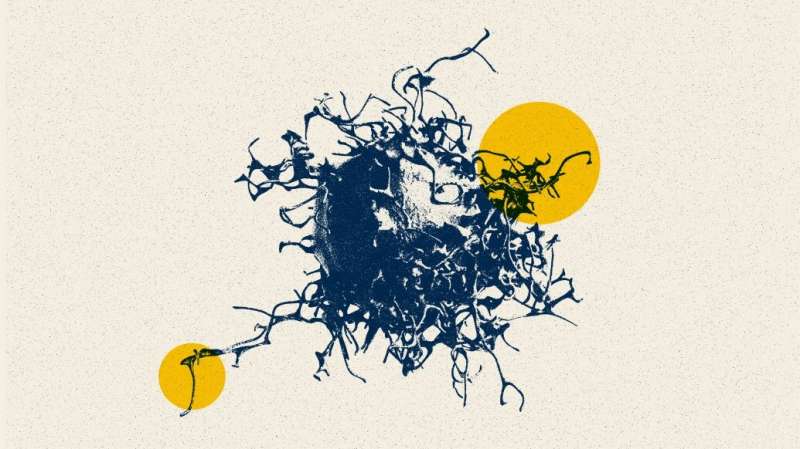This article has been reviewed according to Science X's editorial process and policies. Editors have highlighted the following attributes while ensuring the content's credibility:
fact-checked
peer-reviewed publication
trusted source
proofread
Cancerous brain tumor cells may be at 'critical point' between order and disorder, study suggests

Glioblastoma is the most aggressive form of brain cancer. Despite decades of major efforts and clinical trials, the tumor's survival rate has remained stagnant.
For years, scientists understood the cells in these tumors as static and relatively fixed. But recent studies have uncovered that glioblastomas contain active cells moving in complex patterns known as "oncostreams," which determine how aggressively the tumors grow.
Research led by Michigan Medicine and the University of Michigan, published in Science Advances. suggests that glioblastoma cells are poised near a "critical point" of order and disorder—meaning that the cells possess some form of large-scale coordination throughout the whole tumor that allows them to respond in practical unison to attempts to kill tumor cells, such as chemotherapy or radiation.
"Many people imagine that tumors are made up of different, unconnected cells that invade the normal brain, but we are seeing patterns of organization that show the tumor working almost like a single entity," said senior author Pedro Lowenstein, M.D., Ph.D., Richard C. Schneider Collegiate Professor of Neurosurgery at U-M Medical School and member of the U-M Health Rogel Cancer Center.
"This large-scale coordination of brain tumor behavior may allow tumor cells to resist better against therapies, such as chemotherapy and radiotherapy. Disrupting the large-scale organization of brain tumors may result in more powerful ways to treat and one day eliminate brain tumors," he continued.
The research team used time-resolved tracking of individual glioblastoma cells and investigated their movement by implanting genetically engineered NPA-green, fluorescent cells into the brains of mice.
Results of the study of the movement of glioma cells initially suggested that the cells might be moving independently.
But through examining cell populations of different sizes, researchers found correlated fluctuations across distances many times the size of a single cell, to close to the size of the whole tumor preparation for imaging tumor movement under a microscope.
"Our results indicate that beneath a weakly ordered façade, brain tumor assemblies actually have some form of collective behavior on scales of millimeters or more," said first author Kevin Wood, Ph.D., an associate professor in the Departments of Physics and Biophysics at U-M.
"The work demonstrates that collaboration between biologists and biophycisists working at the frontiers of neuro-oncology and physics can provide new avenues for understanding and potentially treating so far incurable cancers."
Researchers say more research is needed before any clinical implications are determined.
Additional authors include Andrea Comba, Ph.D., of University of Michigan, Sebastien Motsch, Arizona State University Ph.D., and Tomás S. Grigera, Ph.D., of The University of La Plata, Argentina.
More information: Kevin B. Wood et al, Scale-free correlations and potential criticality in weakly ordered populations of brain cancer cells, Science Advances (2023). DOI: 10.1126/sciadv.adf7170

















